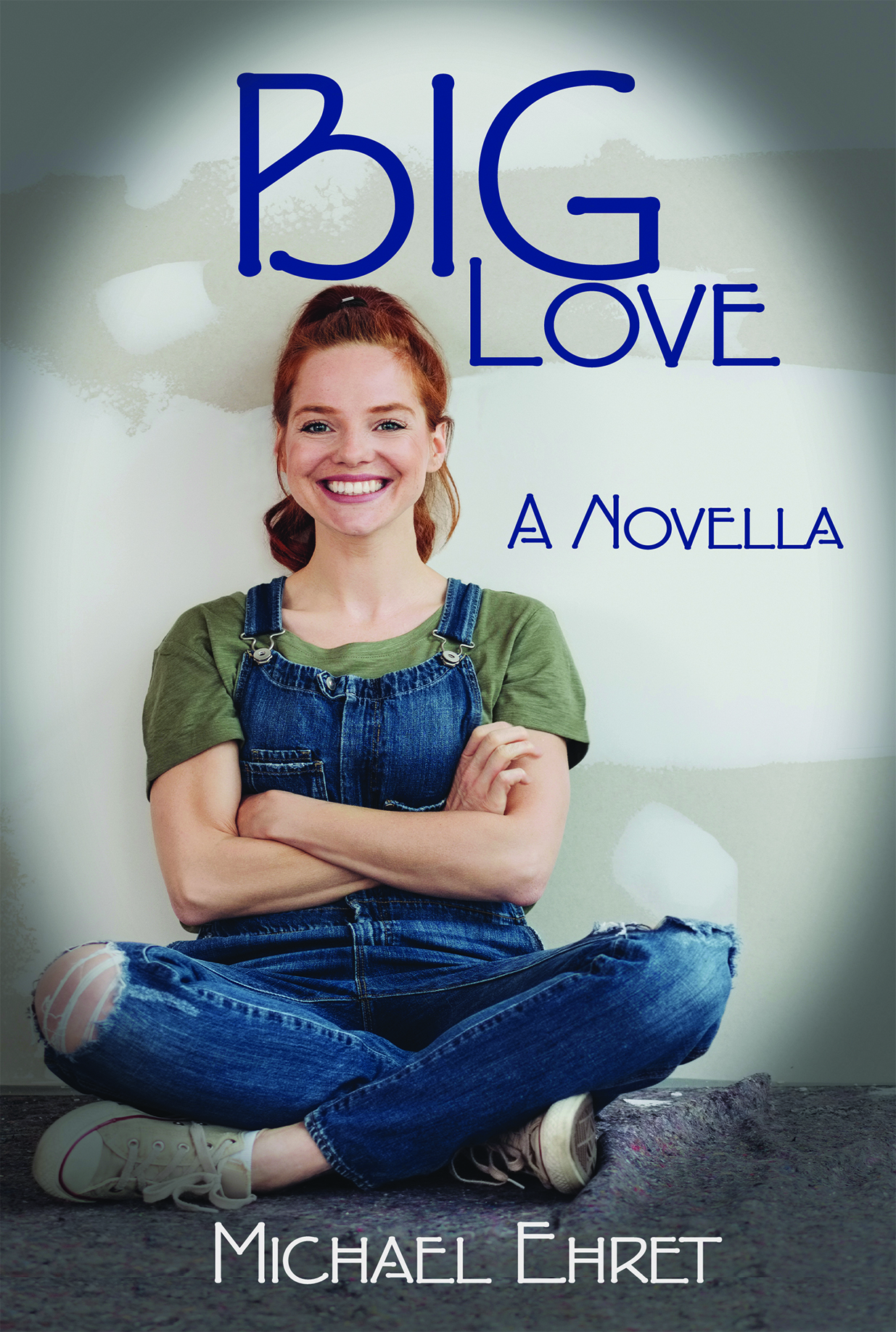
Category Archives: Inspiration
God Sighting: I Think I Can Hear You
I have a habit of looking for God in secular culture because I believe God can, will, and does use anyone to plant the whispers in our lives that often, if we’re listening, lead us to him.
 Sometimes the creative person participates in giving God an outlet, sometimes she doesn’t. I do not care either way. But looking and listening for these breakthrough moments when God gives the world a nudge is a fun, and ultimately rewarding, hobby.
Sometimes the creative person participates in giving God an outlet, sometimes she doesn’t. I do not care either way. But looking and listening for these breakthrough moments when God gives the world a nudge is a fun, and ultimately rewarding, hobby.
For instance, J.K. Rowling and her Harry Potter books. For me, there are echoes of the gospel simply bleeding from those stories. I get that others can’t see past the wizardry, and that’s OK, but that’s not me. I am interested in using whatever tools come my way to shine a light and communicate truth. See, if we can get the heart open sometimes we can insert truth.
I heard another whisper today while listening to a song from Carole King’s 1972 album Rhymes & Reasons, “I Think I Can Hear You.” You can listen to it below.
Disclaimer: I have no idea what King’s inspiration for this song was. I haven’t even tried to find out. For me, it’s a prayer—and I have sung it to God as my prayer—of commitment and dedication.
As a creative Christian—and if we’re made in God’s image and God is the ultimate Creator shouldn’t all Christians be creative? —I often struggle with finding a creative outlet within an evangelical mode. How can I communicate truth in a world that increasingly rejects the very idea of truth? It’s a toughie.
This song’s opening questions expose my desires and insecurities about my place in this world: “What can I do(, God)? How can I serve you? Is it (even) true what I do is a way to be near you?”
Sometimes those questions are answered, sometimes we’re left wondering, as the next statement suggests, whether we can even hear God when he answers. Regardless, it’s true, as the verse’s closing line suggests, that just thinking about God (praying?) can soothe the restless, creative heart.
 Right now, I’m struggling with a new novel I’m writing. Is the idea not good? Do I just not have enough information? Have I gotten ahead of God? (I’m only 3,500 words into it, so I don’t think so.)
Right now, I’m struggling with a new novel I’m writing. Is the idea not good? Do I just not have enough information? Have I gotten ahead of God? (I’m only 3,500 words into it, so I don’t think so.)
The tone and tenor of this story are quite different from my last novella, which was a light-hearted, humorous tale of finding big love in a tiny house. For this story, I’m writing about a man who has made humor his lifeline, who discovers what’s left after it seems the joke is over. It’s anchored on the hymn, “Be Still My Soul,” about living in God’s peace amidst chaos.
That ties beautifully into King’s second verse:
But I’m here, and life is dear,
And I guess that’s a good enough reason to say
Just let me do
What you put me here to
Let me be what you want me to be
And I hope it’ll cheer you.
No, my character is not going to hear King’s song played on a radio or some other contrived occurrence; the song won’t even be in the novella. But that place of belief, that place of “but I’m here and life is dear” acceptance, is exactly where I need to get him by “The End.”
I’m going to sidestep the universalism in King’s third verse—I’m no theologian—but after spending a decade pretty much self-sidelined in my writing by a lack of belief (and a world of crushed hopes and dreams), I do find lasting comfort in knowing, now, that God never stopped believing in me. As King sings, “Even when I thought I didn’t believe, you believed in me.”
I can’t help thinking about Mathew 18:12-14 and the kind of shepherd I have: “A shepherd in charge of 100 sheep notices that one of his sheep has gone astray. … God’s shepherd goes to look for that one lost sheep…”
Where in secular culture do you find God? Leave a comment here or on Facebook!
 Michael Ehret loves to play with words and as the author of “Big Love,” a novella published by Scrivenings Press, he is enjoying his playground. Previous playgrounds include being the Managing Editor of the magazine ACFW Journal and the ezine Afictionado for seven years. He also plays with words as a freelance editor and has edited several nonfiction books, proofedited for Abingdon Press, worked in corporate communications, and reported for The Indianapolis Star.
Michael Ehret loves to play with words and as the author of “Big Love,” a novella published by Scrivenings Press, he is enjoying his playground. Previous playgrounds include being the Managing Editor of the magazine ACFW Journal and the ezine Afictionado for seven years. He also plays with words as a freelance editor and has edited several nonfiction books, proofedited for Abingdon Press, worked in corporate communications, and reported for The Indianapolis Star.
Samara Is A Real Place
 Samara, one of the key locations in my novella “Big Love” (Scrivenings Press) now available for preorder on Amazon, is a real place. It’s about an hour and ten minutes north of me in West Lafayette, just off I-65. It is one of the last houses architect Frank Lloyd Wright envisioned and had built in his Usonian style.
Samara, one of the key locations in my novella “Big Love” (Scrivenings Press) now available for preorder on Amazon, is a real place. It’s about an hour and ten minutes north of me in West Lafayette, just off I-65. It is one of the last houses architect Frank Lloyd Wright envisioned and had built in his Usonian style.
And I never knew it existed—until I needed it.
In that sense, Samara is rather like J.K. Rowling’s fictional creation, The Room of Requirement, in her Harry Potter series of novels. That room appears, stocked with whatever the magician requires at the moment, just as it is needed. And until it is needed, it cannot be found.
Only, as I said, Samara is real. You can visit it and I highly recommend you do.
In my novella, my architecturally-minded journalist and my as-independent-as-Yankee-Doodle small business woman who builds tiny houses for the homeless, needed a place they could explore together to deepen their relationship—and divide them.

Everything you see, including the china, was designed by Wright.
I knew I needed this almost magical place where the natural attraction these two feel for each other could be easily intensified. It’s a novella, after all, there wasn’t a lot of time.
As I searched for the right location—I wanted a real one, not something made up—I knew Purdue University had a great school of civil engineering and that south of Indianapolis is the city of Columbus, renown for its architecture. So this got me thinking about what architectural marvels might be found in Indiana. I fully expected to make a road trip or two to Columbus for exploratory purposes.
But when I searched online for architecture in Indiana, I found this 2014 article from Indianapolis Monthly magazine: “Milestones: An Indiana Architecture Road Trip,” by Daniel S. Comiskey. As I read through the piece, the name “Samara” lit up like neon in my mind.
And the location in West Lafayette couldn’t have been more perfect. My journalist, Nathan “Rafe” Rafferty, lives in Chicago. My builder, Timberly “Berly” Charles, lives in Indianapolis. Connecting them is I-65 and almost exactly in the middle is—Samara.
You hear it too, don’t you? When you read “Samara,” doesn’t it sing? Don’t you almost hear Hervé Villechaize’s Tattoo calling out, “The house! The house,” as Ricardo Montalban’s Mr. Roark strolls nonchalantly onto the veranda?
A quick email to Linda Eales, Samara’s associate curator, secured a visit to the home for my wife and I. And yes, until very recently Samara was a home and a museum. The original owner, Purdue University professor John Christian, and his wife Catherine, lived in the home until their deaths. It is now operated by the John E. Christian Family Memorial Trust and is open to the public.
Here’s a bit of a scene from my character’s visit to Samara. In the living room of the house, Berly and Rafe experience the calming effects of the room’s architecture. The scene is in Berly’s point of view:
Wall-sized windows fill an entire side of this amazing great room that was created before the concept of great rooms. A line of cushioned benches underneath a wall of shelves for books and knickknacks extends into and around the corner of the library section of the room.
Linda talks about how the design, the integration of nature—“With a capital N as Wright would say”—and the unity of the lines in the house create a feeling of peace and relaxation today’s homes often don’t have.
The corner Wright called “the best seat in the house.”
She motions to the library’s distant corner. “Wright would have said that corner bench is the best seat in the house.”
I move into that corner to look at the amazing display of books and other decorative pieces on the shelves.
Rafe follows me. “Don’t you want to sit?”
“Oh, I couldn’t.” To me, this is a museum, and that means Do Not Touch. But Linda confirms Rafe’s invitation.
“No, it’s all right,” she says. “Dr. Christian lived in the home until his death in 2015. The furniture is intended to be used.”
So I do, and Rafe sits next to me. I am sitting on a piece of furniture designed by Frank Lloyd Wright.
“I’ll dim the lights,” Linda says. “That will help you feel the peace.”
As we sit there, in the quiet and in the natural light of a sunny Hoosier afternoon, a calm does descend. My breathing evens out, and my body relaxes. It’s the first time I’ve noticed how architecture can be used to create mood—and I love it. How can this be incorporated in our work at La Petite Maison?
Rafe rests his hand protectively over mine on the seat cushion between us. It scares me to even think about it, but I am beginning to wonder about the future with Rafe. Sitting next to him, I swear I hear some pieces of my life fall into place. I try to lean into the peace and enjoy it. I don’t find it often.
“What are you feeling?” he whispers in my ear, his warm breath accentuating his words.
What am I feeling? I can hardly tell him, now can I? But I am feeling.
Just a short scene or two later, trouble descends in paradise and the comforts of Samara get lost as the characters… well, you’ll just have to read it!
And you can! Why not preorder a copy today? I’d be honored if you left a review on Amazon and/or Goodreads after you’ve finished. Thanks in advance!
Tiny House Living May Not Be For You—But “Big Love” Is!
 I’ve always been attracted to the concept of tiny house living for many reasons:
I’ve always been attracted to the concept of tiny house living for many reasons:
I’m fascinated by them! Tiny houses are part of a current societal trend I find interesting—minimalizing the impact we have on the planet.
They fired my creative synapses! That creativity led to this novella, after all!
I’m a romantic at heart. Tiny homes are, gosh darn it, sort of romantic and intriguing and fun—especially as settings.
While it doesn’t fit my current stage of life, I have contemplated living in a tiny house. Maybe one day, but right now I see them as a fun second home to have on lakefront property. A place to get away to.

My wife waiting in line to see this tiny home. We could live in this on lakefront property some day.
Fortunately, readers don’t have to live in a tiny house to enjoy “Big Love.” But what if you’re seriously considering taking the plunge to tiny- or small-house living?
That’s great! You’ll enjoy “Big Love” then, for sure. If you haven’t plunged yet, but are thinking about it, here are 10 things to consider—especially if you have children at home—that may take the romantic stars out of your eyes. Or not, if you are really committed to small house living.
Diane and Chris, who author the Small Home Family blog linked to above, have two children and live in a 400-square-foot tiny house.
What are your thoughts on tiny house living? Do you say “yes” or “no” or, like me, “maybe” in the right circumstances?
My nomination for Coolest Tiny House Ever
Stumbled across this video of an amazing tiny house called the Escher (named after both the owner’s child and M.C. Escher, one of the world’s most famous graphic artists). If my main character in “Big Love,” Berly Charles, lived in a tiny house it would be something like this.
(Preorder my novella, “Big Love,” now on Amazon!)
There is much more to Escher than just his impossible constructions, but those are what he’s most known for. No doubt you’ve seen a couple, even if you didn’t realize who the artist was. My oldest sister introduced me to Escher when we were in high school. With Salvador Dali, he’s still one of my favorites.
If you’re entranced by tiny houses (I am), you’ll probably enjoy “Big Love.” (Originally published in the novella collection “Coming Home” but newly updated with a new epilogue that hilariously moves the characters forward.) I’d love for you to give it a try and let me know what you think. If you have a link to another cool tiny house, feel free to share here in a comment. I will definitely visit.
 Michael Ehret loves to play with words and as the author of “Big Love,” he is enjoying his playground. Previous playgrounds include being the Managing Editor of the magazine ACFW Journal and the ezine Afictionado for seven years. He also plays with words as a freelance editor and has edited several nonfiction books, proofedited for Abingdon Press, worked in corporate communications, and reported for The Indianapolis Star.
Michael Ehret loves to play with words and as the author of “Big Love,” he is enjoying his playground. Previous playgrounds include being the Managing Editor of the magazine ACFW Journal and the ezine Afictionado for seven years. He also plays with words as a freelance editor and has edited several nonfiction books, proofedited for Abingdon Press, worked in corporate communications, and reported for The Indianapolis Star.
The Sabbath Life for a Writer
This may seem counter-intuitive, but here it is: You can improve your writing by taking time off to not write.
Those of you who are jumping up and down right now because you think you’ve just found a new excuse for your lack of writing this week, this month, this year—“Hey! I’m on a writing Sabbath!”—calm down. You’re misunderstanding.
First, let’s define the term: Sabbath comes from the Hebrew word that means “to cease, to stop working.” As Peter Scazzero writes in his book Emotionally Healthy Spirituality, it refers to “doing nothing related to work for a 24-hour period each week.”
Sabbath, as Scazzero is referring to it, “provides for us … an additional rhythm for an entire reorientation of our lives around the living God. On Sabbaths, we imitate God by stopping our work and resting.”
Reorientation
For many years, I saw the Sabbath as a day to rest after working, working, working for the previous six days. I have used it as an excuse to work more and more throughout the week—if I worked hard enough I could enjoy the Sabbath without feeling guilty. But that’s backward.
A biblical Sabbath isn’t a reward for hard work; it’s not a time to unplug. Rather, it’s an opportunity to plug into God and recharge in anticipation of the coming week. It’s a retreat, yes, but not to inactivity. It’s a retreat into relationship with
God.
So should a writing Sabbath be. Don’t retreat into inactivity, but retreat into activities that build your relationship with your creative self. Some writing Sabbath possibilities:
- Instead of writing five chapters of your current manuscript, pick up one of those long-neglected books on your To Be Read pile and submerge yourself in it. Suspend your inner editor and your inner learner. You’re not looking for typos or trying to analyze how the writer created that unique feature. Your goal is simply to be carried away.
 Instead of spending time “marketing” on Facebook, Twitter, and Pinterest, turn off the computer, call a real friend, and take in a local walking or bicycling path. “Pin” the memories of the beauty you see and experience in your Emotions Bank—you can withdraw them later for use in your WIP.
Instead of spending time “marketing” on Facebook, Twitter, and Pinterest, turn off the computer, call a real friend, and take in a local walking or bicycling path. “Pin” the memories of the beauty you see and experience in your Emotions Bank—you can withdraw them later for use in your WIP.- Instead of printing your latest chapters and grabbing your red pen for corrections, visit a local nursing home, homeless shelter, or school and volunteer with the aged, the invisible, or the young. Your investment could “edit” the course that person’s story takes forever.
Re-Engage
Best of all, when you do return to your desk and computer, you’ll return energized—and may even have a couple great plot points to flesh out as you move your story forward.
The important thing when taking a writing Sabbath is to remember Scazzero’s four principles of a biblical Sabbath and apply them to your writing Sabbath:
- Stop: Stop writing. Stop social media. Stop editing. Lay it all down, knowing that it’s temporary and will still be there when you return. (Deadline exemptions available.)
- Rest: Step completely away from writing and writing-related activities. Your creativity needs it.
- Delight: Experience “joy, completion, wonder, and play,” as Scazzero puts it.
- Contemplate: Before returning to your keyboard, think about the experiences you had and what they might mean when you begin writing again. Seed your brain with the “what if” possibilities and allow them to germinate.
Consider the writing Sabbath—not as an excuse to not write, but as an opportunity to enrich and deepen your well. See if it doesn’t help you recharge for the next session of writing.
One last thought from Scazzero: “Sabbath is like receiving the gift of a snow day every week. Stores are closed. Roads are impassable. Suddenly you have the gift of a day to do whatever you want. You don’t have any obligations, pressures, or responsibilities. You have permission to play.”
Writer image courtesy of Phaitoon/ FreeDigitalPhotos.net
Friends in water image courtesy of adamr/ FreeDigitalPhotos.net
 Michael Ehret loves to play with words and as the editor of CHEFS Mix Blog for CHEFS Catalog he is enjoying his playground. Previous playgrounds include being the Managing Editor of the magazine ACFW Journal and the ezine Afictionado for seven years. He also plays with words as a freelance editor and has edited several nonfiction books, proofedited for Abingdon Press, worked in corporate communications, and reported for The Indianapolis Star.
Michael Ehret loves to play with words and as the editor of CHEFS Mix Blog for CHEFS Catalog he is enjoying his playground. Previous playgrounds include being the Managing Editor of the magazine ACFW Journal and the ezine Afictionado for seven years. He also plays with words as a freelance editor and has edited several nonfiction books, proofedited for Abingdon Press, worked in corporate communications, and reported for The Indianapolis Star.
Originally posted on Novel Rocket
The Summer of Success
Facing a crossroads at the moment—what step to take next and all that. I’m not all angsty over it, but I have been thinking a lot about the late Donna Summer lately, as a result.
Donna Summer? The Queen of Disco?
 First of all, thinking about Donna Summer is not new for me. I’ve had a long time interest in her career and in the singer, herself. I’ve even been known to be a defender of Summer (she’s so much more than disco), because I think her talent was far overshadowed by her persona and by the Super Storm known as Disco that came in and tried, unsuccessfully, to obliterate the Rock and Roll shoreline.
First of all, thinking about Donna Summer is not new for me. I’ve had a long time interest in her career and in the singer, herself. I’ve even been known to be a defender of Summer (she’s so much more than disco), because I think her talent was far overshadowed by her persona and by the Super Storm known as Disco that came in and tried, unsuccessfully, to obliterate the Rock and Roll shoreline.
Variety defined her career
Still, I’m more interested in Summer’s genre-hopping than in her music, per se. For instance, did you know she was nominated for 17 Grammy Awards in eight different categories (sort of like fiction genres)? Further, did you know she won five times in four different categories—twice in Inspirational? That’s right, Inspirational. The singer of 1975s 17-minute+ disco moan-fest, “Love To Love You, Baby,” won two Grammy Awards for Best Inspirational song (1984 and 1985).
Conventional wisdom is to not genre hop in the publishing world. There’s greater freedom in music (Linda Ronstadt also played the field, musically). But in publishing, writers are often advised that if they start in romance (or speculative or historical or suspense) then they should stay in romance (or speculative or historical or suspense).
But, I must have a little Donna Summer in me because I don’t want to be constrained in that way. Before we get all crazy, let’s remember that no one is knocking down my door for my next book—or, for that matter, my first book.
 But—again—we can look to the diva for guidance. Because “conventional wisdom” isn’t called “conventional-sort-of-good-advice,” you know?
But—again—we can look to the diva for guidance. Because “conventional wisdom” isn’t called “conventional-sort-of-good-advice,” you know?
Summer made her mark in one genre—disco. It was the red-hot genre of the time and she rode that horse for all it was worth.
But when the horse started to get hobbled, she made the smart move of wrapping up that era with a Greatest Hits collection, changing record labels, and then came roaring back in 1980 with a rock-pop disc without even a whiff of disco, The Wanderer. And a song from that project earned her one of her Grammy nominations.
What are the lessons for a writer?
- Do your homework. Summer worked in Germany and Europe in various touring companies of shows like “Hair” and “Godspell” before connecting with Giorgio Moroder for her first major album, Love To Love You Baby.
- Establish yourself as an excellent writer of (choose one: romance/historical/suspense/other) and then, like Summer, work your butt off to make your mark. She released seven disco albums from 1975 to 1979—that’s four years—three of them in a row were blockbuster double albums.
- Keep your nose to the ground and your face forward. If you pay attention to the market and publishing trends, you’ll know when it’s time to change genres. If you’re a big enough success, you’ll get your opportunity. When you do, show the same quality, perseverance, and dedication to craft that got you where you are.
That’s the way to build a Hall of Fame career (Summer was inducted into the Rock and Roll Hall of Fame in 2013) and do all the things you want to do.
Summer died May 17, 2012, at age 63. At her death (from cancer) she was working on two albums simultaneously—a collection of standards and a new dance music collection.
For the record, Summer’s Grammy wins were for:
- Best R&B Female Performance, 1979, for “Last Dance.”
- Best Rock Female Performance, 1980, for “Hot Stuff.”
- Best Inspirational Performance, 1984, for “He’s A Rebel.”
- Best Inspirational Performance, 1985, for “Forgive Me.”
- Best Dance Music Performance, 1998, for “Carry On.”
Additionally, she was nominated four times for Best Pop Vocal, twice for Best R&B Vocal, twice for best Rock Vocal, once for Album of the Year, once for Best Disco Vocal, once for Best Inspirational, and once for Best Dance Music.
Not a bad career.
Your turn: So, do you have a little Donna Summer in you?
 Michael Ehret loves to play with words and as the editor of CHEFS Mix Blog for CHEFS Catalog he is enjoying his playground. Previous playgrounds include being the Managing Editor of the magazine ACFW Journal and the ezine Afictionado for seven years. He also plays with words as a freelance editor and has edited several nonfiction books, proofedited for Abingdon Press, worked in corporate communications, and reported for The Indianapolis Star.
Michael Ehret loves to play with words and as the editor of CHEFS Mix Blog for CHEFS Catalog he is enjoying his playground. Previous playgrounds include being the Managing Editor of the magazine ACFW Journal and the ezine Afictionado for seven years. He also plays with words as a freelance editor and has edited several nonfiction books, proofedited for Abingdon Press, worked in corporate communications, and reported for The Indianapolis Star.
Originally posted on Novel Rocket
Filling Your Well of Ideas
Sometimes I think my idea well has run dry. The plots I dredge up are so spare they couldn’t even flesh out a flash fiction story.
Can you relate?
Usually what this means is I need to switch from “creative” mode to “ingestion” mode—I need more raw material to draw from. Some writers can create a story idea from nothing except their own imagination.
That is not me. And if that’s not you, too, maybe this trick will help you fill your well.
Feed Me, Seymour!
Much like the carnivorous plant in “The Little Shop of Horrors,” I need constant feeding. Often I chow down on a great novel; less frequently nonfiction fills my gullet.
Maybe it’s my background as a newspaper reporter, but some of the best food for my imagination comes from the news—including quasi news sources like blogs. Because, as Mark Twain said, “Truth is stranger than fiction, but it is because Fiction is obliged to stick to possibilities; Truth isn’t.”
When I read news, online or print (broadcast doesn’t work for me), invariably I read an article that sparks an idea or two. Now, I freely admit not all of them will produce even a flash fiction piece, let alone a full-blown novel, but the important thing is I’m filling my imagination. At the appropriate time, several of the ideas will likely congeal together and produce something workable.
But I can guarantee that nothing workable will be produced if raw material isn’t imported into the processor.
Is he talking about you?
For instance, I read this commentary from Regis Nicoll the other day called “The High Costs of Living Together.” It included this gem:
In 1969, although the vast majority of people, 82 percent, reported having had sex before marriage by age 30, only 21 percent felt that was morally acceptable.
… Over the next 40 years, as public acceptance grew three-fold (to 63 percent) and (more) people (94 percent) admitted to having “done it,” there was far less social pressure to restrain it or keep quiet about it.
This sea change in attitudes and practices can be attributed to two things: “no-consequence” sex and a morally-compromised Church.
… With roughly 80 percent of the U.S. populace Christian and 94 percent admitting to pre-marital sex, that means that a lot of Christians—very likely the majority—are guilty of sexual sin.
Woah … right? I know a lot of people who will take offense at a study like this. But that’s what makes great fiction!
Is that giving you ideas? (Story ideas, guys, story ideas.) It sure did me. My oeuvre, the framework within which I write, includes marriage, fidelity, trust—and all the antonyms of those, of course. I took the entirety of Nicoll’s piece and fed my imagination with it. Who knows where it may lead, but now that information has been uploaded and is available. (And also stored electronically.)
Fill your well
The point is there are ideas for fiction everywhere if you open your eyes, your heart, and your mind to them. If you read something that sticks with you—good or bad—file that away in your Well of Ideas. Maybe you’ll use it, maybe you won’t. But you for sure won’t use it if you don’t have it stored away.
Obviously our world is ever in need of the transformative power of story—and of Story. What ideas have you picked up from news sources and used in your stories?
Want to play?
Go to the front page of your local paper (or to the home page of CNN or Fox News or your favorite online news source) and read the main story—no cherry picking. Choose one fact or one quote or one idea from that story as your idea seed and freewrite a paragraph or two in the comments.Here’s my example. I wrote this on Jan. 25 based on a story found on FOXNews.com. The story has changed since that day and my idea seed is no longer in it, but it’s still a good example.
My idea seed: The scene was “believed to be secure” police said in a tweet issued at about 12:36 p.m. Here’s what I came up with:
Ethan was dead. True. He’d been an effective triggerman. Also true. But there were others. Many others.
Captain White’s tweet that the mall was “secure” made Gaston—almost—laugh out loud, but he did not “LOL.“ When he laughed, and it was rare, it was real not some fake social construct. But that “out loud” part was a luxury he couldn’t allow himself right now. Later? Most definitely.
Stupid twerkers. Ethan got a few, but they’d be back prancing through the mall in their tight clothes and loose morals soon enough. It was “secure,” after all. White said so. Truth.
So not true.
And then he did chuckle—but quietly. After all, the shoppers trapped in his store from the lockdown were still shook up and hyper aware—no sense in giving them something odd to remember if the police did questioned them.
They’d soon enough embrace again the fragile cloak of security they thought protected them. True, always true.
So, if you want to play leave a comment. Or, if you want to talk about where you get your ideas from—how you fill your Well of Ideas—leave a comment.
Well image courtesy of FreeDigitalPhotos.net and cbenjasuwan.
Couple image courtesy of FreeDigitalPhotos.net and Ambro.
 Michael Ehret loves to play with words and as the editor of CHEFS Mix Blog for CHEFS Catalog he is enjoying his playground. Previous playgrounds include being the Managing Editor of the magazine ACFW Journal and the ezine Afictionado for seven years. He also plays with words as a freelance editor and has edited several nonfiction books, proofedited for Abingdon Press, worked in corporate communications, and reported for The Indianapolis Star.
Michael Ehret loves to play with words and as the editor of CHEFS Mix Blog for CHEFS Catalog he is enjoying his playground. Previous playgrounds include being the Managing Editor of the magazine ACFW Journal and the ezine Afictionado for seven years. He also plays with words as a freelance editor and has edited several nonfiction books, proofedited for Abingdon Press, worked in corporate communications, and reported for The Indianapolis Star.
Originally posted on Novel Rocket
Quote It! Writers and Food
Today, three great quotes from authors that connect writing and food–the two essentials in any writer’s life!
Food fuels, literally, my writing. But, in many ways my writing also fuels my eating. I find when I’m about to give birth to a new project, I crave my comfort foods–chocolate (of course), and the three P’s: pasta, pizza, and popcorn.
 “Am I tough? Am I strong? Am I hard-core? Absolutely. Did I whimper with pathetic delight when I sank my teeth into my hot fried-chicken sandwich? You betcha.”
“Am I tough? Am I strong? Am I hard-core? Absolutely. Did I whimper with pathetic delight when I sank my teeth into my hot fried-chicken sandwich? You betcha.”
― James Patterson, who in the past three years, has sold more books than any other author (according to Bookscan), is the author of the top-selling Alex Cross detective series that includes Along Came a Spider and Kiss the Girls, both made into films. To date, Patterson has had 19 consecutive #1 New York Times bestselling novels.
 “We must have a pie. Stress cannot exist in the presence of a pie.”
“We must have a pie. Stress cannot exist in the presence of a pie.”
― David Mamet, the Pulitzer Prize-winning playwright of Glengarry Glen Ross (1984) and Speed-the-Plow (1988), and the screenwriter of The Verdict (1982) and Wag the Dog (1997).
 “If more of us valued food and cheer and song above hoarded gold, it would be a merrier world.”
“If more of us valued food and cheer and song above hoarded gold, it would be a merrier world.”
― J.R.R. Tolkien, (1892 – 1973) was an English writer, poet, philologist, and university professor, best known as the author of the classic fantasy works The Hobbit, The Lord of the Rings, and The Silmarillion.
What are the foods that fuel your writing? What food do you turn to when things aren’t going well? When you’re about to kill a character, do you amp up the caffeine? What are your food and writing connections?
__________________________________________
Michael Ehret, for Writing on the Fine Line
 Michael loves to play with words and as editor of the ACFW Journal, he is enjoying his playground. He also plays with words as a freelance editor here at WritingOnTheFineLine.com, where he often takes a writer Into The Edit, pulling back the veil on the editing process. He has edited several nonfiction books, played with words as a corporate communicator, and reported for The Indianapolis Star.
Michael loves to play with words and as editor of the ACFW Journal, he is enjoying his playground. He also plays with words as a freelance editor here at WritingOnTheFineLine.com, where he often takes a writer Into The Edit, pulling back the veil on the editing process. He has edited several nonfiction books, played with words as a corporate communicator, and reported for The Indianapolis Star.
Quote It! Chuck Colson
 “At the root of what makes us good, just, and decent, is a recognition that we owe a debt to those who have gone before us.”
“At the root of what makes us good, just, and decent, is a recognition that we owe a debt to those who have gone before us.”
–Chuck Colson, Watergate figure who emerged from the country’s worst political scandal a vocal Christian leader and a champion for prison ministry, spent the last years of his life in the dual role of leading Prison Fellowship, the world’s largest outreach to prisoners, ex-prisoners and their families, and the Colson Center, a teaching and training center focused on Christian worldview thought and application. Colson died in April of 2012.
__________________________________________
Last night, our small group finished the study Doing The Right Thing. This quote from Colson was one of the last statements made in the video.
I can’t get it out of my mind.
The statement is truth for each of us, but for the Christian the debt both deepens and enriches. In a Kingdom economy, the debt we owe is one of love:
8 Don’t owe anyone anything, with the exception of love to one another—that is a debt which never ends—because the person who loves others has fulfilled the law.
(Romans 13:8, The Voice)
But what does it mean to me as a writer? Certainly I owe a debt to my parents and siblings who nurtured me–and to my wife who never fails to believe–but also to my writing teachers from first grade (Mrs. Oyer at Hawthorne Elementary) through college (Kim Peterson at Bethel College).
But many others have invested in me as a writer and editor–including many of you who are reading this now. To each I owe my thanks, but also my commitment to use what you willingly gave from your storehouse. There is one other thing: I owe to those who come after me, my own willingness to share, encourage, and educate.
Together we make a chain–and we make each other “good, just, and decent.”
Colson’s quote was one of the last things the video lesson shared. The last thing was this:
“Gratitude is the mother of all virtues.” — G.K. Chesterton
__________________________________________
Michael Ehret, for Writing on the Fine Line
 Michael loves to play with words and as editor of the ACFW Journal, he is enjoying his playground. He also plays with words as a freelance editor here at WritingOnTheFineLine.com, where he often takes a writer Into The Edit, pulling back the veil on the editing process. He has edited several nonfiction books, played with words as a corporate communicator, and reported for The Indianapolis Star.
Michael loves to play with words and as editor of the ACFW Journal, he is enjoying his playground. He also plays with words as a freelance editor here at WritingOnTheFineLine.com, where he often takes a writer Into The Edit, pulling back the veil on the editing process. He has edited several nonfiction books, played with words as a corporate communicator, and reported for The Indianapolis Star.












